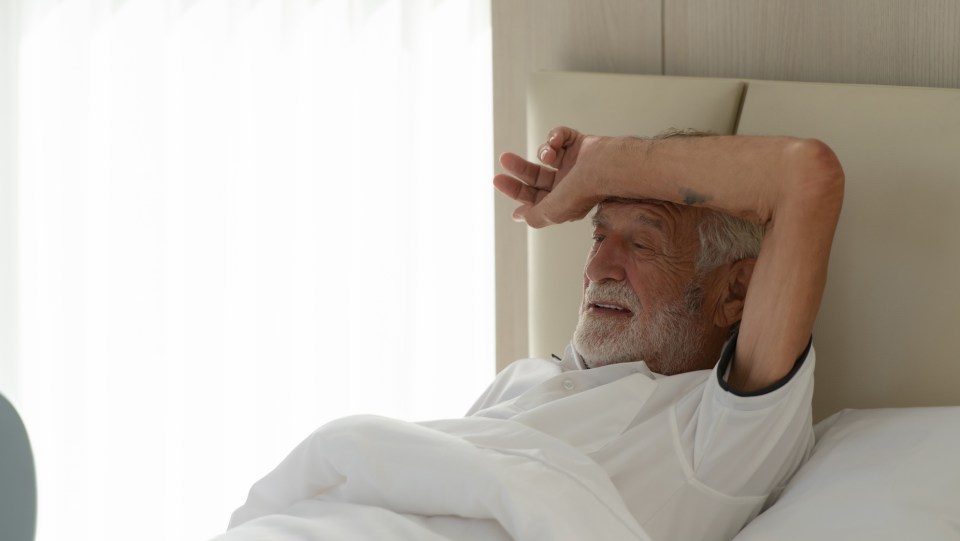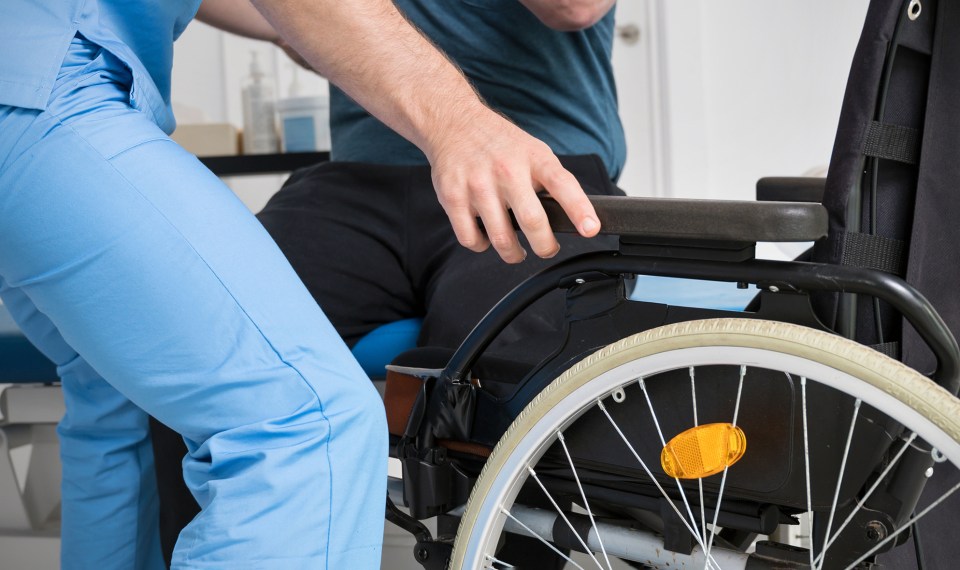The field of occupational therapy has recognized sleep and rest as a normal body function since 1922, yet many practitioners do not feel they have adequate knowledge and the skills to evaluate and treat sleep habits. This often leads to it going unaddressed, which could negatively impact the individual’s recovery after an illness or injury.
The average adult needs seven to eight hours of sleep per night. According to the CDC, 30 to 46% of American adults do not meet the recommend amount of nightly sleep.
Sleep is directly related to mood, behavior and energy levels needed for everyday tasks, as well as an individual’s ability to participate in therapy.
Effects of lack of sleep
Too little or too much sleep can have both long- and short-term effects on the body.
Short-term effects include:
- Reduced quality of life
- Increased stress
- Emotional distress
- Pain
- Reduced cognitive functioning, particularly short-term memory
Long-term consequences associated with sleep disruption and poor sleep hygiene include:
- Depression
- Hypertension
- Type II diabetes
- Weight-related issues
- Cancer
- Cardiovascular disease
What is sleep hygiene?
Sleep hygiene is the modifiable behaviors and environmental adjustments that can be used to promote sleep quality and improve sleep duration.
As experts in evaluating a person and their environment, habits and routines, occupational therapists are uniquely qualified to address sleep and sleep hygiene. It should be a part of the overall care plan to promote optimal healing and well-being throughout recovery.
Components such as the environment, medication and the physical effects associated with the recovery process can all contribute to poor quality of sleep, especially if the individual is in the hospital setting.
Understanding your patient’s sleep hygiene
The first way to gain a better understanding of your patient’s sleep hygiene is through motivational interviewing. First, understand any current sleep disorders they might have and if and what sleep medications they are taking. Other topics to talk to your client about when assessing sleep hygiene include:
Behavioral Components
- Food/drink intake before sleep
- Daily caffeine intake
- Smoking and/or alcohol consumption
- Substance abuse
- Exercise habits
- Wind down routine before going to sleep
- Napping habits
- Sleep timing
- Technology use prior to sleep
- How close to bedtime are they doing mentally taxing activities
Environment
- Bed comfort. Is their bed too hard or soft? Do they even sleep in a bed?
- Room temperature: Is it too hot or too cold?
- Darkness vs. brightness of room
- Noises level: Noisy pets, roommates, neighbors?
- Do they have a bed partner?
Psychological factors
- Stress and anxiety management
Compiling a sleep journal
Another way to gain important information to address sleep hygiene is through a sleep journal. A sleep journal can aid in tracking sleep and wake times, nighttime wakings and disruptions, and other contributing behavioral, environmental or psychological factors.
Information from a sleep journal, in addition to the information from motivational interviewing, can be used to plan interventions to improve sleep hygiene.
Individualized education and recommendations
One way to assist in improving sleep hygiene is through education. Once you have a more complete picture of your patient’s sleep habits and routines, provide individualized recommendations and educational topics to help them improve their sleep and aid in their recovery and overall quality of life.
If the patient has a known sleep disorder or is using sleep medications, education and recommendations could include:
- Ensure the individual has discussed any pharmaceutical sleep aids with their physician to ensure the dosage is correct and that they are taking it at the correct time.
- If they had a sleep study recommended in the past, help them to follow up and get it scheduled.
- Melatonin may be a good option for some; the dosage should be discussed with a physician.
Based on their behavior and routines, recommendations and education could include:
- Stop eating and drinking at least 30 minutes to two hours before going to bed. This will help decrease the need for trips to the bathroom overnight and/or problems with indigestion.
- Avoid caffeine closer to bedtime. Studies recommend cutting off caffeine consumption by late afternoon.
- Abstain from alcohol and cigarettes at least two hours before bed or abstain altogether.
- The effects of substance abuse are wide-ranging. Individuals should abstain from using any narcotics or medications for any purposes that are not prescribed or intended by the manufacturer.
- Exercising in the morning or early afternoon can be beneficial for sleep. Exercising later in the day may be detrimental to sleep. Daily exercise (even if light in intensity) may improve sleep.
- Avoid arousing, demanding or stressful activities before bed.
- Avoid technology use 15 minutes to one hour before bed. Recommend relaxing activities such as taking a warm bath or shower, listening to calming music or reading a book for pleasure instead.
- Naps should be around 30–45 minutes. Avoid napping for longer than two hours. Nap only in midday or early afternoon. Avoid naps in late afternoon and evening times.
- Try to go to bed and get up at the same time if possible. If the patient needs to catch up on sleep, it is better to go to bed earlier than to sleep later. Night workers need to make sleep a priority. They should reschedule daytime activities and ensure family and friends are aware of sleep schedules.
- Avoid watching television to fall asleep or endless scrolling on cellphones in bed. Tech devices typically emit blue light, which disrupts melatonin levels and natural sleep cycles. Noise and flashing lights from the television, tablet or phone may also disrupt sleep.
- Always avoid studying or doing work in bed. Studying or working close to bedtime can be stimulating and/or stressful and make falling asleep more difficult.
If an individual needs adjustments to their environment, these recommendations can help them better prepare for quality sleep:
- Find a sleep surface that is comfortable. Some may prefer to sleep in a recliner. Recommend a new mattress or ways to modify an existing mattress if the current one is too hard or soft.
- Most people sleep best in a room that is not hot or humid. Studies suggest an optimal temperature of 62–68 degrees. Some sleep better with a fan. Remove heavy blankets if it’s too hot at night. If the room is too cold, the patient may need to add blankets or use a heated blanket with a timer/automatic shutoff.
- A bright bedroom is detrimental to sleep. Encourage the use of curtains, blinds or an eye mask to block out light for third shift workers or those with bright lights in their neighborhood. It is also important to have bright light exposure during the day, especially during the winter months. This will aid in maintaining one’s circadian rhythm.
- Noisy pets, neighbors or bed partners may make sleep difficult. Recommend ear plugs or sound machines to block out disrupting noises.
- Individuals should work with their bed partner to determine if any of the bed partner’s poor sleep hygiene habits may be affecting their own sleep hygiene. Decide if the mattress works for both bed partners, make a plan for screen time and light use, and use ear plugs or sound machines to eliminate sounds such as snoring.
Psychological Factors to educate individuals on include:
- Stress, anxiety and worry can have a big impact on sleep. Encourage your patient to seek help from a counselor or mental health professional if warranted.
- Activities such as meditation exercises, deep breathing, journaling and writing a list of worries may help to keep those worries from affecting sleep.
- Cognitive-behavioral exercises for decreasing anxiety could also be recommended.
Achieving the recommended seven to nine hours of sleep a night can be challenging. Now imagine the complicating factors of stress, pain and the environment of an inpatient setting; it would be difficult for anyone to achieve sufficient sleep. Including sleep as a part of your comprehensive evaluation is essential to understanding an individual’s true occupational needs.
This post was compiled by Encompass Health occupational therapists Erika Endsley, Vini Pearlman, Shonda McCauley, Erin Henshaw and Kristina Kangas
References
Bhakta, T., & MacRae, N. (2020, November 24). Effects of occupational therapy and sleep hygiene in the hospital. American Occupational Therapy Association. https://www.aota.org/publications/ot-practice/ot-practice-issues/2020/hospital-sleep-hygiene
De Pasquale, C., El Kazzi, M., Sutherland, K. Shriane, A. E., Vincent, G. E., Cistulli, P. A., & Bin, Y. S. (2024). Sleep hygiene – What do we mean? A bibliographic review. Sleep Medicine Reviews, 75, 101930, 1087-0792. https://doi.org/10.1016/j.smrv.2024.101930
Centers for Disease Control and Prevention. (2024, May 15). FastStats: Sleep in adults. Centers for Disease Control and Prevention. https://www.cdc.gov/sleep/data-research/facts-stats/adults-sleep-facts-and-stats.html
Ludwig, R., Eakman, A., Bath-Scheel, C., & Siengsukon, C. (2022). How occupational therapists assess and address the occupational domain of sleep: A survey study. American Journal of Occupational Therapy, 76, 7606345010. https://doi.org/10.5014/ajot.2022.049379
Medic, G., Wille, M., & Hemels, M. (2017). Short- and long-term health consequences of sleep disruption. Nature and Science of Sleep, 9, 151-161. doi:10.2147/NSS.S134864
Tester, N. J., & Foss, J. J. (2018). The issue is – Sleep as an occupational need. American Journal of Occupational Therapy, 72, 7201347010. https://doi.org/10.5014/ajot.2018.020651
Smallfield, S., & Lucas Molitor, W. (2018). Occupational therapy interventions addressing sleep for community-dwelling older adults: A systematic review. American Journal of Occupational Therapy, 72, 7204190030. https://doi.org/10.5014/ajot.2018.031211
The content of this site is for informational purposes only and should not be taken as professional medical advice. Always seek the advice of your physician or other qualified healthcare provider with any questions you may have regarding any medical conditions or treatments.



